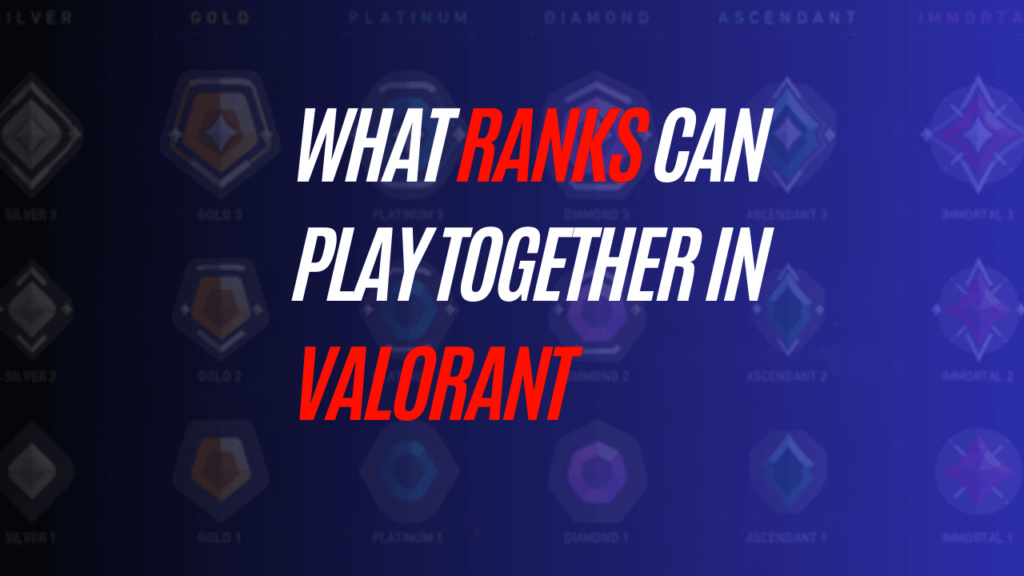
- World of Warcraft
-
Dragonflight 10.2Dragonflight 10.2
-
GoldGold
-
Mythic+ DungeonsMythic+ Dungeons
-
RaidsRaids
-
AmirdrassilAmirdrassil
-
Character BoostCharacter Boost
-
GearingGearing
-
ProfessionsProfessions
-
ReputationsReputations
-
- Call of Duty
-
Modern Warfare 3Modern Warfare 3
-
MW3 Camo BoostingMW3 Camo Boosting
-
MW3 Weapon LevelingMW3 Weapon Leveling
-
Modern Warfare 2Modern Warfare 2
-
MW2 Camo BoostingMW2 Camo Boosting
-
Warzone 2Warzone 2
-
WZ Rank BoostWZ Rank Boost
-
WZ Wins BoostWZ Wins Boost
-
Modern Warfare ZombiesModern Warfare Zombies
-
- Apex Legends
-
Rank BoostingRank Boosting
-
Predator BoostPredator Boost
-
Kills FarmKills Farm
-
Badge BoostBadge Boost
-
Damage BadgesDamage Badges
-
20 kills20 kills
-
4000 damage4000 damage
-
20 kills + 4k damage20 kills + 4k damage
-
- The Finals
-
Leagues BoostLeagues Boost
-
Ranked UnlockRanked Unlock
-
VRs FarmVRs Farm
-
Battle Pass BoostBattle Pass Boost
-
Triangle Twinkle BoostTriangle Twinkle Boost
-
- Diablo 4
- Counter Strike 2
- Overwatch 2
- Valorant
- World of Warcraft
-
Dragonflight 10.2Dragonflight 10.2
-
GoldGold
-
Mythic+ DungeonsMythic+ Dungeons
-
RaidsRaids
-
AmirdrassilAmirdrassil
-
Character BoostCharacter Boost
-
GearingGearing
-
ProfessionsProfessions
-
ReputationsReputations
-
- Call of Duty
-
Modern Warfare 3Modern Warfare 3
-
MW3 Camo BoostingMW3 Camo Boosting
-
MW3 Weapon LevelingMW3 Weapon Leveling
-
Modern Warfare 2Modern Warfare 2
-
MW2 Camo BoostingMW2 Camo Boosting
-
Warzone 2Warzone 2
-
WZ Rank BoostWZ Rank Boost
-
WZ Wins BoostWZ Wins Boost
-
Modern Warfare ZombiesModern Warfare Zombies
-
- Apex Legends
-
Rank BoostingRank Boosting
-
Predator BoostPredator Boost
-
Kills FarmKills Farm
-
Badge BoostBadge Boost
-
Damage BadgesDamage Badges
-
20 kills20 kills
-
4000 damage4000 damage
-
20 kills + 4k damage20 kills + 4k damage
-
- The Finals
-
Leagues BoostLeagues Boost
-
Ranked UnlockRanked Unlock
-
VRs FarmVRs Farm
-
Battle Pass BoostBattle Pass Boost
-
Triangle Twinkle BoostTriangle Twinkle Boost
-
- Diablo 4
- Counter Strike 2
- Overwatch 2
- Valorant
- World of Warcraft
-
Dragonflight 10.2Dragonflight 10.2
-
GoldGold
-
Mythic+ DungeonsMythic+ Dungeons
-
RaidsRaids
-
AmirdrassilAmirdrassil
-
Character BoostCharacter Boost
-
GearingGearing
-
ProfessionsProfessions
-
ReputationsReputations
-
- Call of Duty
-
Modern Warfare 3Modern Warfare 3
-
MW3 Camo BoostingMW3 Camo Boosting
-
MW3 Weapon LevelingMW3 Weapon Leveling
-
Modern Warfare 2Modern Warfare 2
-
MW2 Camo BoostingMW2 Camo Boosting
-
Warzone 2Warzone 2
-
WZ Rank BoostWZ Rank Boost
-
WZ Wins BoostWZ Wins Boost
-
Modern Warfare ZombiesModern Warfare Zombies
-
- Apex Legends
-
Rank BoostingRank Boosting
-
Predator BoostPredator Boost
-
Kills FarmKills Farm
-
Badge BoostBadge Boost
-
Damage BadgesDamage Badges
-
20 kills20 kills
-
4000 damage4000 damage
-
20 kills + 4k damage20 kills + 4k damage
-
- The Finals
-
Leagues BoostLeagues Boost
-
Ranked UnlockRanked Unlock
-
VRs FarmVRs Farm
-
Battle Pass BoostBattle Pass Boost
-
Triangle Twinkle BoostTriangle Twinkle Boost
-
- Diablo 4
- Counter Strike 2
- Overwatch 2
- Valorant
- World of Warcraft
-
Dragonflight 10.2Dragonflight 10.2
-
GoldGold
-
Mythic+ DungeonsMythic+ Dungeons
-
RaidsRaids
-
AmirdrassilAmirdrassil
-
Character BoostCharacter Boost
-
GearingGearing
-
ProfessionsProfessions
-
ReputationsReputations
-
- Call of Duty
-
Modern Warfare 3Modern Warfare 3
-
MW3 Camo BoostingMW3 Camo Boosting
-
MW3 Weapon LevelingMW3 Weapon Leveling
-
Modern Warfare 2Modern Warfare 2
-
MW2 Camo BoostingMW2 Camo Boosting
-
Warzone 2Warzone 2
-
WZ Rank BoostWZ Rank Boost
-
WZ Wins BoostWZ Wins Boost
-
Modern Warfare ZombiesModern Warfare Zombies
-
- Apex Legends
-
Rank BoostingRank Boosting
-
Predator BoostPredator Boost
-
Kills FarmKills Farm
-
Badge BoostBadge Boost
-
Damage BadgesDamage Badges
-
20 kills20 kills
-
4000 damage4000 damage
-
20 kills + 4k damage20 kills + 4k damage
-
- The Finals
-
Leagues BoostLeagues Boost
-
Ranked UnlockRanked Unlock
-
VRs FarmVRs Farm
-
Battle Pass BoostBattle Pass Boost
-
Triangle Twinkle BoostTriangle Twinkle Boost
-
- Diablo 4
- Counter Strike 2
- Overwatch 2
- Valorant


Teamwork is instrumental in ascending the ranks in Valorant. Playing with trusted friends guarantees you have coordination, even if your random teammates are quiet. However, not everyone can play with their friends due to differences in rank. So before queuing up, you must determine what ranks are permitted to play together in Valorant.
Luckily, we have the answers. Today we’ll explain the rank disparities and which ranks can party up. Here are all the ranks that can team up in Valorant.
Valorant Ranked Matchmaking Restrictions
Generally, you can queue with ranks precisely one tier below or above your current rank. However, these guidelines change depending on your rank and party size. Riot enforces strict limitations around these to ensure fair matches, which is why some high-ranked players prefer smurfing to playing with friends.
Rules for Duos and Trios
For duo and trio queues, the limitations differ depending on your rank. Figuring out compatible ranks can be confusing, so we’ve created a simple table.
| Lowest Allowed Rank in Party | Highest Allowed Rank in Party |
| Iron and Bronze | Silver |
| Silver | Gold |
| Gold | Platinum |
| Platinum, Diamond, Ascendant, Immortal, and Radiant | The maximum allowed rank difference is 1 tier higher (for example, Platinum 2 players can queue with up to Diamond 2 players). |
In summary, Iron and Bronze players can party with up to Silver players. Silver players can play with Gold, and Gold with Platinum. So can a Bronze play with a Gold in Valorant? Unfortunately no.
Once the highest rank in your party is Diamond or above, the rules change slightly. You can only play with ranks exactly one tier higher or lower than yours. Therefore, if you’re Diamond 2, you can only party with Platinum 2 to Ascendant 2. Any higher or lower rank disparity becomes too large.
These limitations make climbing the upper Valorant ranks even more challenging.
Rules for Full Five Player Parties
The compatible ranks expand significantly in a full premade group of five players. This helps diminish smurfing by enabling most players to use their main accounts while queuing with low-ranked friends.
Mostly, there are no restrictions on what ranks can party together in five stacks. Players from Iron to Ascendant can team up freely. However, parties outside the standard rank limitations will incur RR reduction penalties. Penalties ranging from 25% to 75% apply based on the rank discrepancy between the highest and lowest ranked players.
As for higher ranks, they can still play with lower ranks with some caveats. If one or more players are Immortal, the party automatically receives a 25% RR reduction. If at least one player is Radiant, you’ll be penalized 75% to 90% RR reduction.
That covers everything you need to know about permissible ranks for partying up in Valorant. Hopefully, this helps you play with your friends! Have fun out there.
In Conclusion
Understanding the rank restrictions in Valorant is crucial for teaming up with friends and ensuring a fair and competitive experience. Whether you’re just starting out or are a high-ranked player, these guidelines are designed to maintain balance in the game. However, if you find yourself unable to group with your friends due to rank disparities, our Valorant rank boosting service can be a viable option. It can help elevate your rank, allowing you to enjoy the game alongside your friends. As you continue your journey in Valorant, remember that the essence of the game is to have fun and create lasting memories with your teammates.